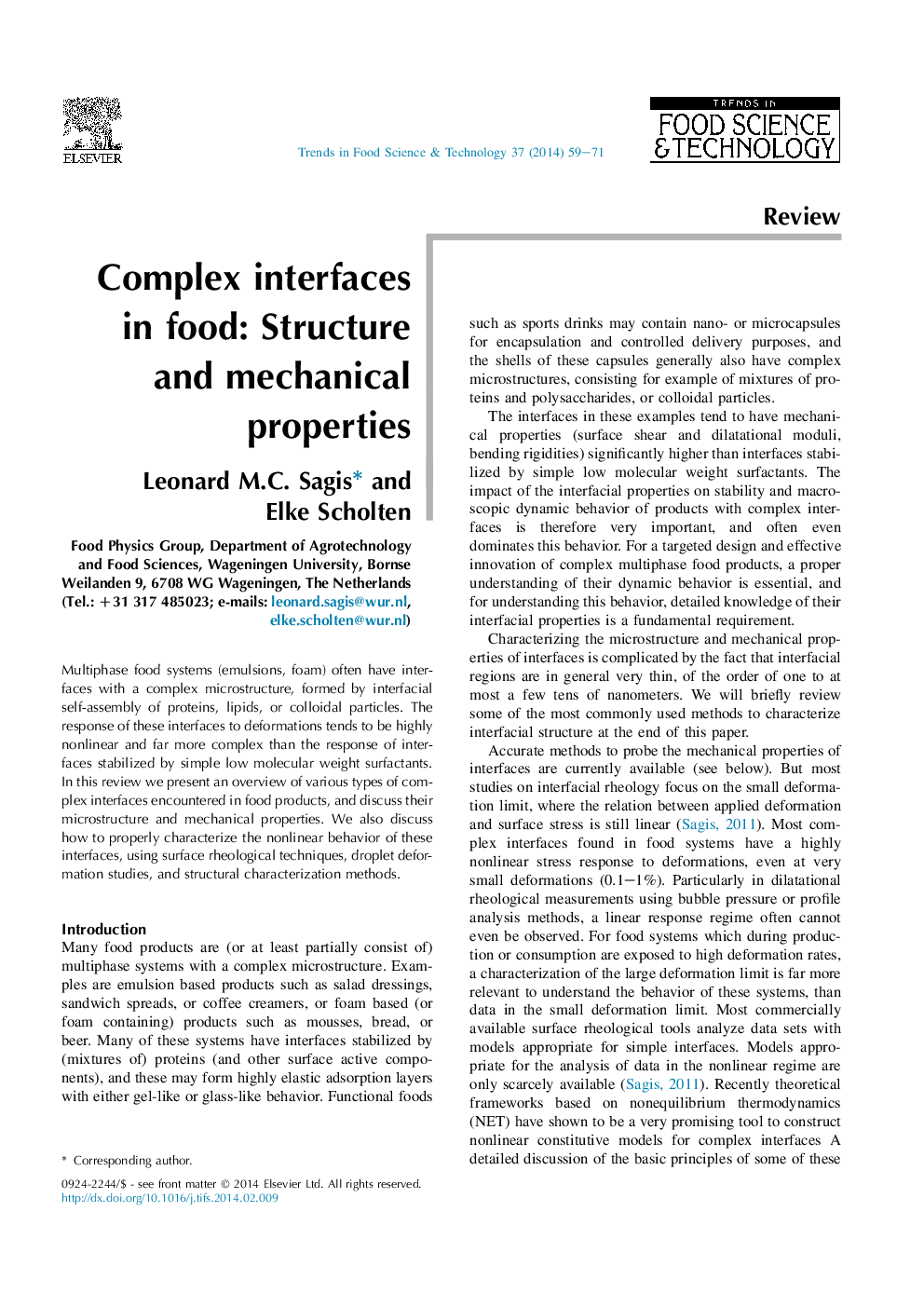| Article ID | Journal | Published Year | Pages | File Type |
|---|---|---|---|---|
| 2098706 | Trends in Food Science & Technology | 2014 | 13 Pages |
•Complex interfaces are ubiquitous in food.•These interfaces have complex microstructures and highly nonlinear mechanical behavior.•We review experimental methods to properly characterize this behavior.•These include surface rheology, droplet studies, and structure characterization methods.
Multiphase food systems (emulsions, foam) often have interfaces with a complex microstructure, formed by interfacial self-assembly of proteins, lipids, or colloidal particles. The response of these interfaces to deformations tends to be highly nonlinear and far more complex than the response of interfaces stabilized by simple low molecular weight surfactants. In this review we present an overview of various types of complex interfaces encountered in food products, and discuss their microstructure and mechanical properties. We also discuss how to properly characterize the nonlinear behavior of these interfaces, using surface rheological techniques, droplet deformation studies, and structural characterization methods.
